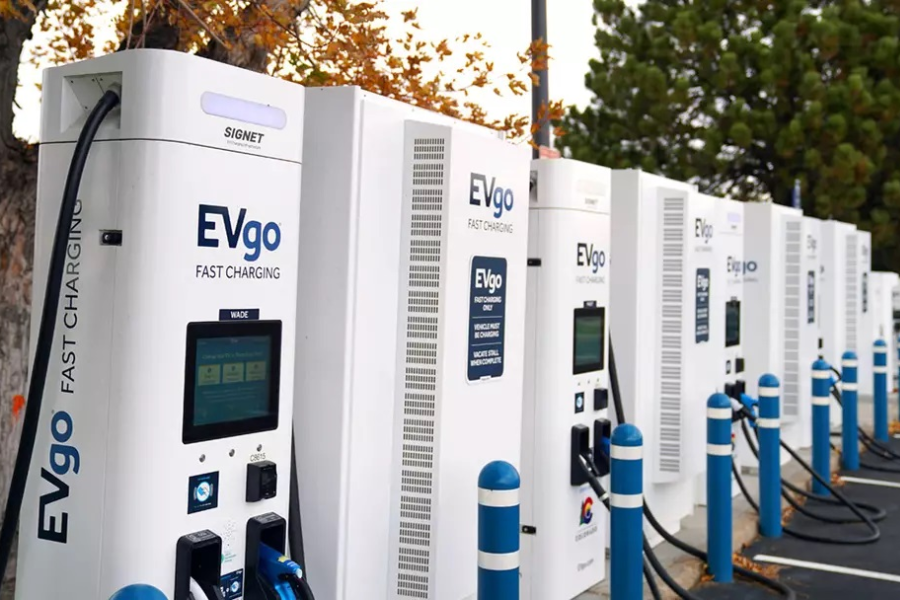EV Revolution: The Charging Station Surge
Key Takeaways
- Electric vehicle (EV) charging infrastructure is rapidly expanding globally.
- Multiple types of EV chargers provide different levels of power and charging speeds.
- Government incentives and policies are crucial in promoting EV adoption and infrastructure.
- Technological advancements and innovations are enhancing EV charging efficiency.
- Challenges such as grid capacity and charger compatibility need addressing for widespread EV adoption.
The EV revolution drives a surge in charging station installations, focusing on accessibility and speed. Innovations include ultra-fast chargers, wireless options, and smart grid integration. Expanding networks in urban and rural areas support growing EV adoption, reducing range anxiety and promoting sustainable, widespread electric vehicle use.
Introduction
Electric vehicle (EV) adoption is rising rapidly as the world rushes towards a more sustainable future. Central to this transformation is developing a robust and widespread EV charging infrastructure, which ensures EV owners have convenient access to power. An integral part of this evolution is the availability of comprehensive EV charging solutions that cater to various charging needs and conditions.
This article delves into the various aspects of EV charging stations, highlighting their importance in the modern world, focusing on the types of chargers, global infrastructure, government policies, technological advancements, challenges, and the future outlook. From slow overnight charging to ultra-fast public chargers, understanding these elements is critical to appreciating their pivotal role in the EV ecosystem.
Types of EV Chargers
Multiple EV chargers are available today, each designed to meet specific needs and use cases. Here, we explore Level 1, Level 2, and DC Fast Chargers:
- Level 1 Chargers: These basic chargers use a standard household outlet. They are ideal for overnight charging but are the slowest option available. People who frequently drive short distances and have plenty of free time are the most outstanding candidates for a Level 1 charger, which can boost a car’s range by two to five miles per hour.
- Level 2 Chargers: Found in residential and commercial settings, Level 2 chargers deliver power more quickly than Level 1 chargers using a 240-volt outlet. These chargers can add approximately 10 to 20 miles of range per hour, making them a much more efficient option for daily use. Typically installed in homes, workplaces, and public parking areas, Level 2 chargers balance convenience and charging speed.
- DC Fast Chargers: These chargers provide rapid charging by converting AC power to DC within the station, making them suitable for public charging stations along highways. DC Fast Chargers are perfect for rapid top-ups and long-distance travel since they can add 60–80 miles of energy in just 20 minutes. However, only some places where quick response is crucial may install them due to their increased cost and power needs. However, the higher cost and power requirements limit their installation to specific locations where fast turnaround is essential.
Global EV Charging Infrastructure
The expansion of EV charging infrastructure varies by region, with some countries leading the charge more aggressively than others. For instance, Norway has the highest EV adoption rates globally, driven by state incentives and a substantial charging network. In urban areas, it’s common to find charging stations in almost every parking lot, encouraging the daily use of EVs. Similarly, China has made significant strides in building an extensive network of public charging stations. With ambitious plans for further expansion, China’s cities are becoming more EV-friendly.
According to Statista, the number of publicly accessible EV chargers worldwide surpassed 1.3 million units in 2020 and continues to grow. This rapid expansion is not limited to developed nations; emerging markets also increasingly invest in EV infrastructure as part of their green initiatives.
Government Incentives and Policies
Government support is pivotal for the wide-scale adoption of EVs. This support often comes in the form of tax incentives, grants, and rebates for EV purchasers and charging infrastructure developers. For instance, the United States federal EV tax credit provides up to $7,500 for purchasing specific EV models. These financial incentives significantly lower the initial cost barrier for consumers, making EVs more accessible to a broader audience.
Policies such as California’s Zero Emission Vehicle (ZEV) Program also play a critical role in mandating that automobile manufacturers produce a certain number of zero-emission vehicles, thus fostering an ecosystem better suited for EV advancements. Additionally, several European countries offer substantial benefits such as free parking, toll exemptions, and reduced company car taxes to promote EV usage.
Reports from the US Department of Energy indicate that robust policy frameworks significantly boost EV adoption rates. Countries with well-defined policies and generous incentives generally show higher EV penetration rates, underlining the importance of government actions in this transition.
Technological Advancements in EV Charging
Innovation is at the heart of the evolving EV charging landscape. Technologies such as wireless charging, solar-integrated charging stations, and vehicle-to-grid (V2G) systems are set to revolutionize how we power our electric vehicles. These advancements offer unique benefits, making EV charging more convenient, cost-effective, and sustainable.
Wireless Charging: This technology allows for charging EVs without physical connectors, relying on electromagnetic fields to transfer energy between two plates. This makes for a seamless and convenient charging experience. For instance, drivers can park their car over a wireless charging pad, and the vehicle starts charging automatically. While still in its early stages, wireless charging has the potential to eliminate the hassle of plug-in systems and reduce wear and tear on charging components.
Vehicle-to-Grid (V2G): V2G technology enables EVs to return electricity to the grid during peak demand, thus turning EVs into mobile energy storage units. This capability can help balance grid loads, reduce energy costs, and provide a backup power source during outages. As grid integration improves, V2G has the potential to play a crucial role in our future energy landscape.
Challenges and Solutions
Despite the optimistic outlook, challenges hinder the widespread adoption of EVs. Key issues include grid capacity constraints, charger compatibility, and charging station installation costs.
- Grid Capacity: The surge in EVs means increased electricity demand. Upgrades are essential for the current electrical grid to manage this additional demand effectively. Large-scale use of renewable energy sources and smart grids can help sustainably manage this demand.
- Charger Compatibility: Various charging standards, such as CHAdeMO, CCS, and Tesla’s Supercharger, can create compatibility issues for EV drivers. Industry cooperation and the development of universal charging standards are essential for seamless EV adoption across different regions.
- Installation Costs: Installing EV charging stations can be expensive, particularly for high-capacity charging units. Financial incentives and advancements in technology are necessary to mitigate these costs. For example, community-shared charging stations and public-private partnerships can help distribute the financial burden.
Future Outlook
The future of EV charging is bright, with continuous innovations and policy support paving the way for mass adoption. Efforts to develop ultra-fast chargers and bolster renewable energy sources will further enhance the feasibility and sustainability of electric vehicle use. Future charging stations might also incorporate augmented reality interfaces and predictive maintenance to offer superior user experiences.
As more automotive giants pledge to electrify their fleets and cities worldwide commit to greener transportation, the expansion of EV charging infrastructure is set to accelerate, driving us toward a more sustainable, electric future. The inevitability of this transition is underscored by the mounting urgency to combat climate change, making EVs and their supporting infrastructure cornerstones of our future transportation landscape.
Keep an eye for more news & updates on GlamourUer.Com!






